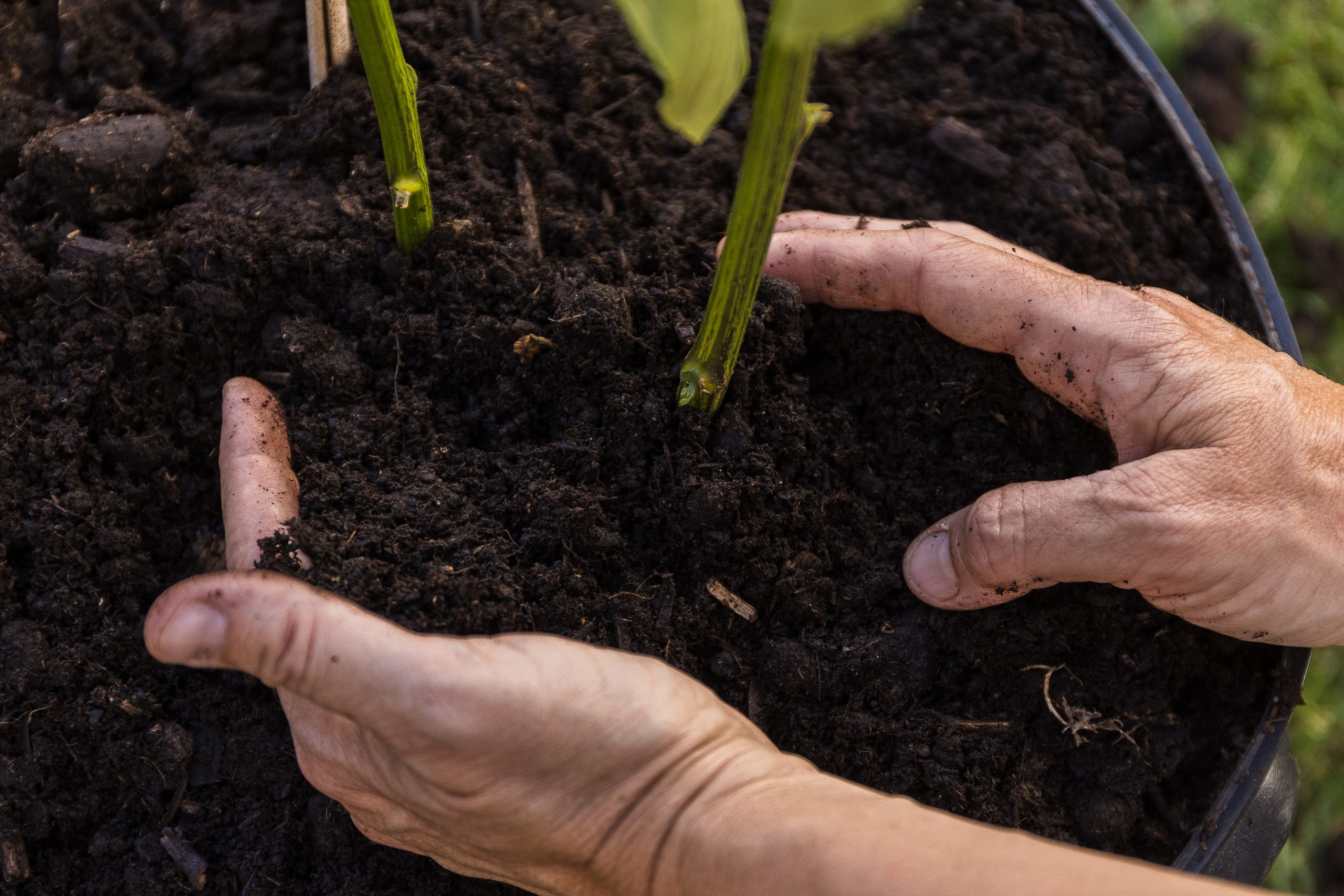Life on Earth exists from and because of soil, yet many of us go about our lives with little thought about its importance.
Turn your mind for a minute to some of the basic elements of our lives: the food we eat, the trees and plants that give us oxygen, the water we use and drink, our weather and climate health. All require, or benefit greatly from, healthy soil.
Good quality soil is based on a simple equation: What you take out, you must put back in. Because our society has not stuck to this principle, we have allowed the organic matter levels of our soil to diminish significantly, and the health of our soil to become threatened.
One easy way to restore equilibrium is to add compost to the soil. Composting is a natural process through which organic material is converted into a soil-like product, or humus (pronounced “hew- muss”). When compost is applied to our yards and gardens, it provides texture, structure, and nutrients, resulting in healthy soil and strong plant growth.
But compost signifies even more than all of this. It reflects the day- to-day choices we make when faced with our unavoidable kitchen scraps and garden trimmings.
We can send all of this material out of our sight, buried in a landfill. Besides wasting valuable space, this creates methane gas, a greenhouse gas that contributes 86 times more to climate change than carbon dioxide.
Or we can enlist the power of curbside yard waste collection and backyard compost bins, turning kitchen food scraps, leaves, and garden trimmings into nutrient-rich food for our soil. This way, the amount of compost produced, or the lack of it, serves as a barometer for how well we are caring for our planet.
If a backyard composter or community garden is within your reach, this form of recycling is a fabulous way to create humus, a natural treasure, and help put the brakes on climate change. It works best for fruit, vegetable, and garden trimmings. Meat, fish, and dairy products should not be part of the mix, although they are appropriate for green bin collection programs where they can be better managed.
Once a compost bin is either purchased or built from scratch, there are a couple of simple steps to take before getting started. First and foremost, place your composter in a sunny area with good drainage. Making sure that the location is convenient and accessible year round is important.
Turn the soil in the location where the composter will sit. Then, after placing and securing it, cover the composter’s floor with a layer of small branches. This will allow for air movement and drainage.
You are then ready to start putting your compost bin to work. Alternate the wet, or green materials, such as food scraps with dry yard materials. The composting process works best when the organic pieces are small.
Try not to add thick layers of any one kind of organics. For example, if you put grass clippings in your bin, they should be no more than six centimetres deep with leaves up to 15 centimetres in depth. It’s good to cut or chop, or dry and crumble leaves before adding them. If you can, let grass dry first or mix it with dry, coarse material such as leaves to prevent compacting.
The composter contents should be moist, like a wrung-out sponge. If the contents are too dry, they will compost slowly; if too wet, they may begin to smell.
To help add air to the process, turn or mix the compost every couple of weeks.
Generally, you can expect compost to be ready by the next gardening season. Once done, it can be applied back into the garden to boost the soil’s nutrients and provide better soil structure.
As you go about caring for your soil and using compost, you are helping to tackle climate change. Here are key points to help in that process.
Five steps to maintaining a climate-smart lawn and garden:
Stop digging
Soils are living ecosystems, teeming with beneficial organisms that support plant growth and health. These organisms are your underground workforce. Digging, tillage, and other forms of soil upheaval destroy underground communities and reduce the benefits these organisms can provide.
Keep soil well rooted
Roots are the main source of food for your microbial workforce, secreting sugars and other nutrients. Never leave soil without plants growing in it.
Nurture the soil
Respect your underground workforce; use thoughtful and gentle methods to feed your soil and protect plants.
Shield the soil
Bare soil is vulnerable soil; your workforce needs to be protected—extreme temperatures and moisture levels harm and deplete your microbial workforce. Protect them by keeping soil covered, perhaps with
Welcome diversity
Your lawn and garden are complex ecosystems. Different plants tend to attract and nurture different soil microbes. These soil critters have a direct, positive impact on plant growth and vitality as well as helping soil retain and store carbon. Aim for plant diversity.
The organic matter in compost is essential food for our soil. Every time we decide to compost food scraps and garden trimmings, we are improving the health of the planet.

